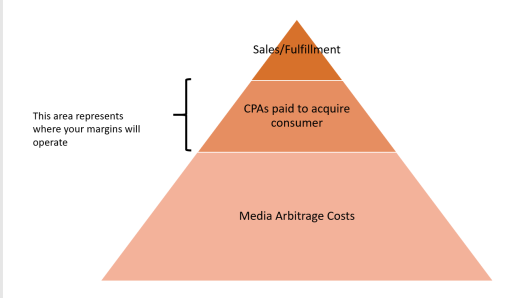Performance Marketing. Performance marketing is typically described as a form of digital marketing where 3rd party advertisers – i.e., networks, agencies, affiliates, etc. – drive consumers to an advertiser, brand or offer and are paid when a specific action (click, a lead, or a sale), is completed.
There is no sugar coating it, Performance Marketing is a difficult universe to navigate because of that dirty word that no one wants to use: Affiliates. The reason being is that there are only two types of affiliates, the good ones and the bad ones. There is absolutely no middle ground.
There are the white hats who want to make a dollar a day for the rest of their lives based off of partnerships and trust, and there are the black hats who want to make $100 a day for a few days and then move on the next scam… er, opportunity. The process to evaluate and identify the good ones can be exhausting and expensive (which is what I am here for). But it is a very important process that is best explained by Bill Joy.
Bill Joy is a co-founder of Sun Microsystems. Sun Microsystems, of course, was the company that sold computers and IT services and created JAVA. Bill Joy is attributed with something known as Joy’s Law which states:
“No matter who you are, most of the smartest people work for someone else.”
This isn’t an affront to your brand, this is simply an example of the basic economic principle of the scarcity of resources. In other words, no matter how great your brand is, and no matter how awesome your heads of SEO, SEM, Display or Social are, there are other folks out there that are at least as talented, if not better. Joy said, “It is better to create an ecosystem that gets all the world’s smartest people toiling in your garden for your goals.” Performance Marketing enables you to tap into Joy’s Law by not only leveraging the super-stars that you have on staff but also those that are industry experts not currently “toiling in your garden.”
I understand the argument against Performance Marketing, but like the concept of influencer marketing, its an adorable idea but, in reality, is completely without merit.
 Forgive my crude graphic artist skills, but here is a visual representation of the conversation had by many large brands. This is a visual representation of Performance Marketing.
Forgive my crude graphic artist skills, but here is a visual representation of the conversation had by many large brands. This is a visual representation of Performance Marketing.
The bottom of the pyramid is where your affiliates acquire marketing on your behalf and arbitrage their media spend against your CPAs. The middle is where they pay out to acquire the consumer, the brand’s effective acquisition cost and then the top is when they fulfill the sale or sell a lead. The opportunity for margins is smaller, but acquisition costs are flatter, more predictable, and there should always be margin. There is virtually no media risk.
 However, if you can eliminate the media arbitrager and buy the media directly yourself, you could effectively lower your cost to acquire the consumer and thereby increase your margins dramatically. But this is where I will typically call BS.
However, if you can eliminate the media arbitrager and buy the media directly yourself, you could effectively lower your cost to acquire the consumer and thereby increase your margins dramatically. But this is where I will typically call BS.
If you can truly do this, then by all means you should! But Joy’s law tells us that most of the people you are effectively competing against to acquire your consumer don’t work for you. So odds are, in every situation you simply are not going to be able to acquire the consumer as cheaply as some of the affiliates and effectively can, therefore, leverage their buying power to achieve better margins than you would if you tried to acquire media on your own.
You need to test both and I am certainly not saying that you have to leverage affiliates in all situations to be successful. But there are certainly going to be some situations where leveraging affiliates make the most business sense and if you, as a brand, are not open to it then you are costing yourselves margins as a result.
Too many brands look at affiliates as a necessary evil in marketing rather than the synergistic opportunity that it is. But for the brands who know that 1 + 1 can actually equal 3, they will continue to exercise an advantage in the customer acquisition process and further differentiate themselves from their competitors.